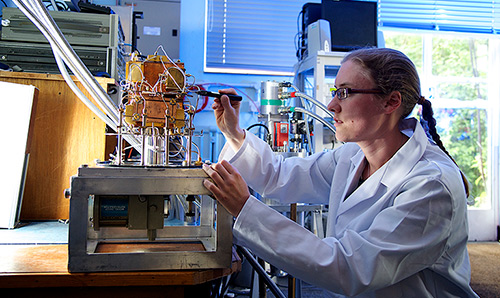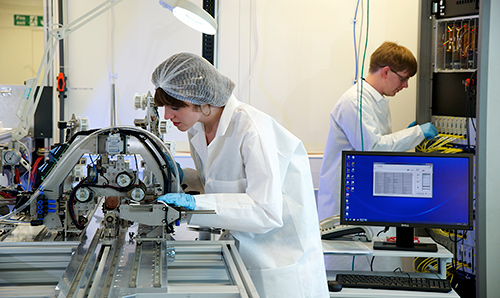Biological physics
Our biological physics research concerns a series of experimental and computational topics, including molecular self-assembly and cell mobility tracking.
Academic staff
- Jichen Li
- Jian Lu
- Thomas Waigh
- Henggui Zhang
Research areas of interest include:
- biointerfacial processes of molecular self-assembly;
- surface active biopolymers;
- membrane selective peptide amphiphiles;
- antigen binding to surface immobilised antibodies;
- cell mobility tracking and rheology in bacterial biofilms;
- modelling of various cardiac processes in the heart.
Some of these studies focus on technological explorations, as our researchers aim to apply techniques and ideas from physics to biological problem.
Our research activity in this area can be further described under the following topics:
Biointerface
Biointerface research involves studying molecular and cellular structure under conditions mimicking biological and biomedical applications, and applying the latest physical techniques to access direct information at molecular and cellular levels from various biointerfacial processes.
Specific areas of focus include:
- antibody-antigen binding;
- tissue engineering;
- controlled local gene delivery;
- biomaterials development.
Biocomputing
Our biocomputing research focuses on discovering new ways to analyse and interpret experimental data and relate it to the functions of life.
Through our research, we look to address the following questions:
- How do we interpret, analyse the experimental information and relate it to the functions of life?
- Can we reconstruct biological systems from such detailed information?
Biomolecular structure and dynamics
Research in this field includes the study of water around DNA, proteins and biopolymers using various neutron sources around the world.
These studies have shed new light towards the understanding of the structure and dynamics of water in the biological environments.
In order to make further progress in this field, we are concentrating our efforts on the basic building block of proteins - amino acids - using inelastic and quasi-elastic neutron scattering techniques and computational methods.
Intracellular particle tracking and self-assembly
We are examining a number of new microrheology methods to examine the viscoelasticity inside live cells and relate these properties to the structure and dynamics of the constituent cellular biomolecules.



